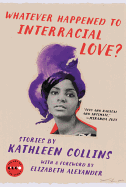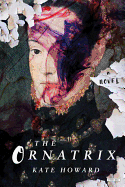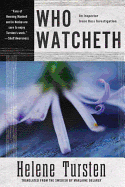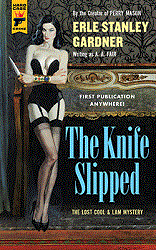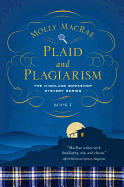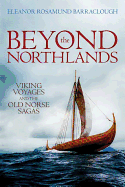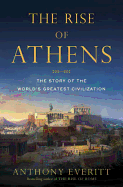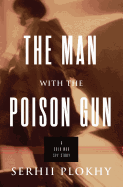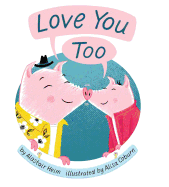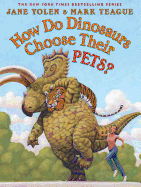 |
| photo: Luke Fontana |
Rajiv Surendra is a modern-day Renaissance man: he's a painter, a potter, woodworker, calligrapher and an actor best known for his scene-stealing performance as the rapping mathlete Kevin Gnapoor in Mean Girls. He lives in New York City, where he runs his business Letters in Ink while continuing his career in the arts. His first book, The Elephants in My Backyard (Regan Arts), chronicles his 10-year journey chasing after the lead role in the film adaptation of Life of Pi.
On your nightstand now:
I'm starting to dive into a brand-new hobby--one that I've wanted to explore for over 10 years--classical portrait painting. I dream of one day painting giant oil portraits of friends and family members, so I'm reading about one of my favorite artists of all time. John Singer Sargent: The Later Portraits by Richard Ormond and Elaine Kilmurray is the massive book that's propped up on my chest before I go to bed most nights. But I'm taking breaks from it to read about figure drawing in Drawing Lessons from the Great Masters by Robert Beverly Hale.
Favorite book when you were a child:
Hmmm, please define child. Child like four or five years old, or child like 10 or 12? There's a big difference, ya know. The book that I stubbornly demanded my mom to read over and over every night was Mortimer by Robert Munsch. In elementary school, we could check out three books each week from our library, and I took this book out every single week for my entire first and second grades. It drove my mom nuts. By the time I could read on my own, my favorite book became What the Witch Left by Ruth Chew--it was a simple story but the author managed to really capture the essence of what "magic" is all about, something I now try to bring into my everyday life.
Your top five authors:
In NO specific order, and I mean that wholeheartedly (but maybe the fact that these names are coming to me in some specific order does, truly, mean something. Whatever, don't overthink it): John Steinbeck, Ruth Chew, Yann Martel, Margaret Atwood, William Faulkner.
Book you've faked reading:
Middlemarch by George Eliot. It was my choice from a reading list in 11th grade. Big, thick, fat, heavy, mistake. I might try it again sometime in the future, now that I can relate to lusting after a stranger with the most perfect facial features while pretending to look at sculpture in an art gallery.
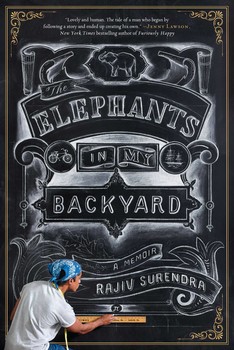 Book you're an evangelist for:
Book you're an evangelist for:
To Kill a Mockingbird by Harper Lee. We had to read this in high school and I loved it. I read it to my mom, aloud, one summer a few years ago. I read it to her in a Southern accent and realized that the book was written in a Southern accent. I don't think I need to discuss why I will praise this story for the rest of my life. It's a cornerstone of American literature.
Book you've bought for the cover:
Elegantissima: The Design and Typography of Louise Fili. I bought it without even looking inside, but its contents proved to be very useful to my current trade as a calligrapher and chalkboard artist.
Book you hid from your parents:
I started working out during my first year of university and, as I do with every new venture I embark on, bought a book as a primer for being introduced to the basics. Strength Training Anatomy by Frédéric Delavier was THE PERFECT book to help me learn proper form for weight lifting--but the cover featured a drawing of a naked man flexing his biceps (with anatomical details of every muscle and bone engaged). I feared my parents would unexpectedly come across this book and assume I had a thing for hot male bodies. Turns out, I do have a thing for hot male bodies.
Book that changed your life:
Mrs Dalloway by Virginia Woolf. I read it after watching the film adaptation of The Hours. I wasn't familiar with the stream-of-consciousness style, so I remember trying to read the first page of Mrs Dalloway about five times--and giving up each time because I just didn't "get it." Then one afternoon, in a moment of pure frustration, I said, "F**K IT!" to myself, "I'm just gonna read this WITHOUT thinking about it," and it worked. It was exactly what one needs to do with that style, I think, just read without trying to pick apart the text or over-analyzing. For me, that book sums up what life is all about.
Favorite line from a book:
Oh, geez. Well, I guess I have to go back to my Southern accent and pull my all-time favorite line from To Kill a Mockingbird. It gets me every time--I have to fight back the tears but I always lose the battle.
"Neighbors bring food with death and flowers with sickness and little things in between. Boo was our neighbor. He gave us two soap dolls, a broken watch and chain, a pair of good-luck pennies, and our lives. But neighbors give in return. We never put back into the tree what we took out of it: we had given him nothing, and it made me sad."
It's not a line, it's a paragraph. I know, okay, back off.
Five books you'll never part with:
Well, when I'm dead, I will have to part with my books, so I guess I'm lying if I say I'll "never part with" these books. But for the time being:
My battered copy of Life of Pi.
The River Café Cookbook by Ruth Rogers and Rose Grey (the silver cookbook). This, to me, is the best cookbook in the world. The food is simple and delicious and also very healthy. Perfection.
Maharajas' Jewels by Katherine Prior, another book I bought for the cover--a big coffee-table book that somehow reminds me of my parents' reminiscing of their childhoods in Ceylon. On rainy weekends I'll leaf through that book, just for the old sepia photographs, and be instantly transported to another world--one that doesn't exist anymore.
Ornamental Pen Designs and Flourishes by Carol Belanger Grafton, a thin, almost leaflet-like book by Dover that I've used for my calligraphy. It is invaluable to me and it's one of the books that have helped me put a roof over my head. It was out of print for a while, and I noticed the price of it skyrocketing on the Internet.
At Home with Beatrix Potter by Susan Denyer--another rainy-day book. My mom would read Beatrix Potter's books to me and my sisters. I came across this book as teenager--about her life and home in the Lake District--and it gave me a newfound respect and appreciation for this amazing person who singlehandedly saved thousands of acres of rolling hills, and forests that now belong to England's National Trust.
Book you most want to read again for the first time:
East of Eden by John Steinbeck.
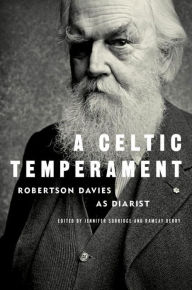 I'm always on the hunt for new opportunities to insert myself in the lives of others. My current TBR wish list includes War Diaries, 1939-1945 by Astrid Lindgren, translated by Sarah Death; A Celtic Temperament: Robertson Davies as Diarist, edited by Jennifer Surridge & Ramsay Derry; The Folded Clock: A Diary by Heidi Julavits; and Ian Brown's Sixty: A Diary of My Sixty-First Year.
I'm always on the hunt for new opportunities to insert myself in the lives of others. My current TBR wish list includes War Diaries, 1939-1945 by Astrid Lindgren, translated by Sarah Death; A Celtic Temperament: Robertson Davies as Diarist, edited by Jennifer Surridge & Ramsay Derry; The Folded Clock: A Diary by Heidi Julavits; and Ian Brown's Sixty: A Diary of My Sixty-First Year.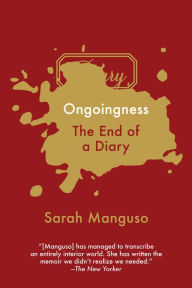 One of my favorite recent reads is a brilliant contemplation on the impossible dream of keeping a journal. In Sarah Manguso's Ongoingness: The End of a Diary, she confronts the beast itself: "I started keeping a diary twenty-five years ago. It's eight hundred thousand words long.... The trouble was that I failed to record so much."
One of my favorite recent reads is a brilliant contemplation on the impossible dream of keeping a journal. In Sarah Manguso's Ongoingness: The End of a Diary, she confronts the beast itself: "I started keeping a diary twenty-five years ago. It's eight hundred thousand words long.... The trouble was that I failed to record so much."



 Book you're an evangelist for:
Book you're an evangelist for: